
Richard Spooner on Getting to Know New Horses – Part Two: Overcoming Challenges
Blog
Richard Spooner on Getting to Know New Horses – Part Two: Overcoming Challenges
Richard Spooner’s equestrian career includes accolades that most riders dream of. He has a process of getting to know new horses and building a rapport with them that has led to continuous success. Part one (link to that article) included the details of his process of getting to know a new horse.
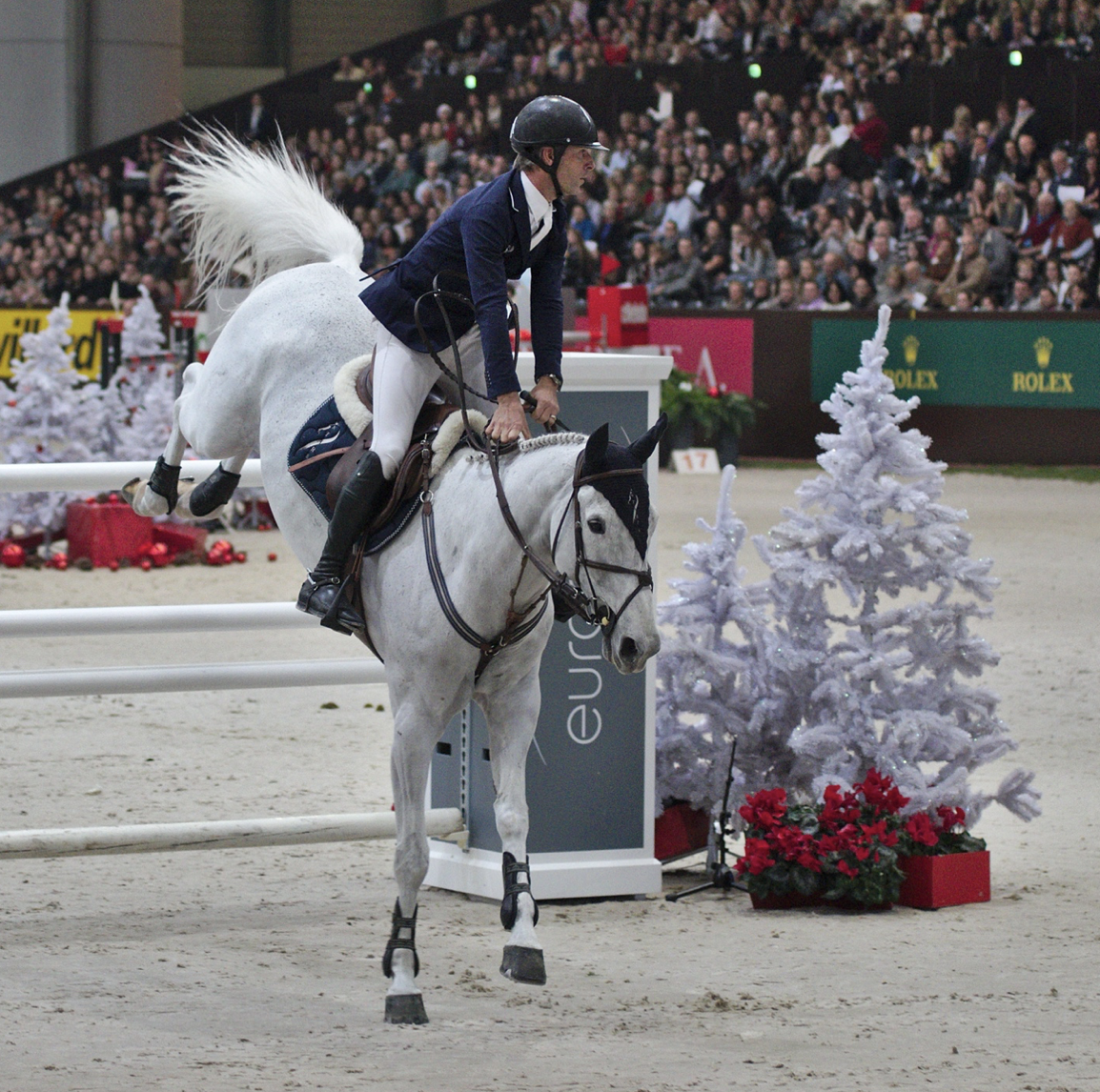
Chivas Z and Richard Spooner. Photo: Clément Bucco-Lechat
Occasionally, we all face challenges in our riding and training careers, and Richard discusses how to overcome those challenges and work with a difficult horse.
“All riders and trainers have difficult horses, it’s all shades of gray,” he says. “What’s the common thread that binds all difficult horses? It’s easy to forget their past because you don’t know their past. Everyone you meet has a different past and it’s hard to get people to communicate with you honestly about where they’ve been misled/used/abused in the past and impossible to get a horse to tell you that. Riders need the ability to think outside the box, especially with difficult horses.”
Richard further explains that we need to remember that with horses, we’re working on everything they’ve done in their history, and we don’t know what that is. If we follow the textbook or the industry techniques, then we’re going to have the same results the last rider had because we’re doing the same basic regime.
“Riders have to do different things with difficult horses, otherwise you trigger the same result and behavior the last rider did and you’re reinforcing the animal’s disdain,” Richard continues. “It’s very difficult as a rider because we’re trained in a very narrow spectrum – our education as riders – it’s similar to other riders – if something isn’t working, we don’t necessarily have the ability to be outside the spectrum, if you can’t get outside that spectrum everyone is wasting their time. No matter what makes the horse difficult, they are struggling to understand, a confused horse is always a difficult horse. When horses know and understand the rules, they cease to be difficult.”
Richard Spooner’s Rules for Overcoming Challenges
The biggest mistake most riders and trainers make is having the idea that you know what you’re doing and how to train this animal, or that the horse is not performing well because the horse is not good enough. We have all made this mistake at some point. Richard has developed five rules that are important for all riders to use, and that he always reminds himself of when he’s stuck:
- Go back to the basics. “If I come out of the Grand Prix ring with eight plus faults, I’ll start thinking it’s not going in the right direction, and go back to the flat and gymnastic work, and jump smaller,” he says.
- Don’t do the same thing over and over and expect a different result. “I say that to myself a lot,” Richard remarks.
- Maintain objectivity. Performance frustration stymies creative thought. Riders can’t get frustrated; the minute you are frustrated, you can’t look at the situation objectively and you need to be objective. This is very difficult because it’s an emotional sport, but we lose when our emotions rule.
- Don’t be afraid to give up if you’re not the right trainer or rider for that horse. Let someone else do it. “You wouldn’t stay in a dysfunctional relationship,” Richard adds. “This goes back to the beginning, you have all these dreams that the horse will complete you, but it puts so much pressure on you and you can’t follow the other rules because you’re trying to force performance instead of having it come with time, exploration, and patience.”
- Seek help. “That’s one thing I liked about competing in Europe. We were at international shows on a weekly basis with the top riders in the world. It’s like any circus, we all travel together, and the Europeans are very open in communicating about training horses – that’s really what we’re supposed to be doing. The most important thing should be sharing information and giving each other help; collective education is far more valuable than individuals.”
European riders are willing to talk about problems, lend advice, and ask questions. Richard noted that the very best riders in the world ask the most questions. It’s the top horsemen that are the most curious. It doesn’t matter if you’re at the bottom or top, you have to be willing to communicate with other horsemen across all spectrums, and also learn from those in other genres. He mentioned that he’s worked with and learned from western, hunter, Arabian trainers, and others. You never know where inspiration will come from but won’t get fresh thoughts from someone that’s just like you – reach outside the box for different opinions and ideas. There are a lot of ways to solve every problem.
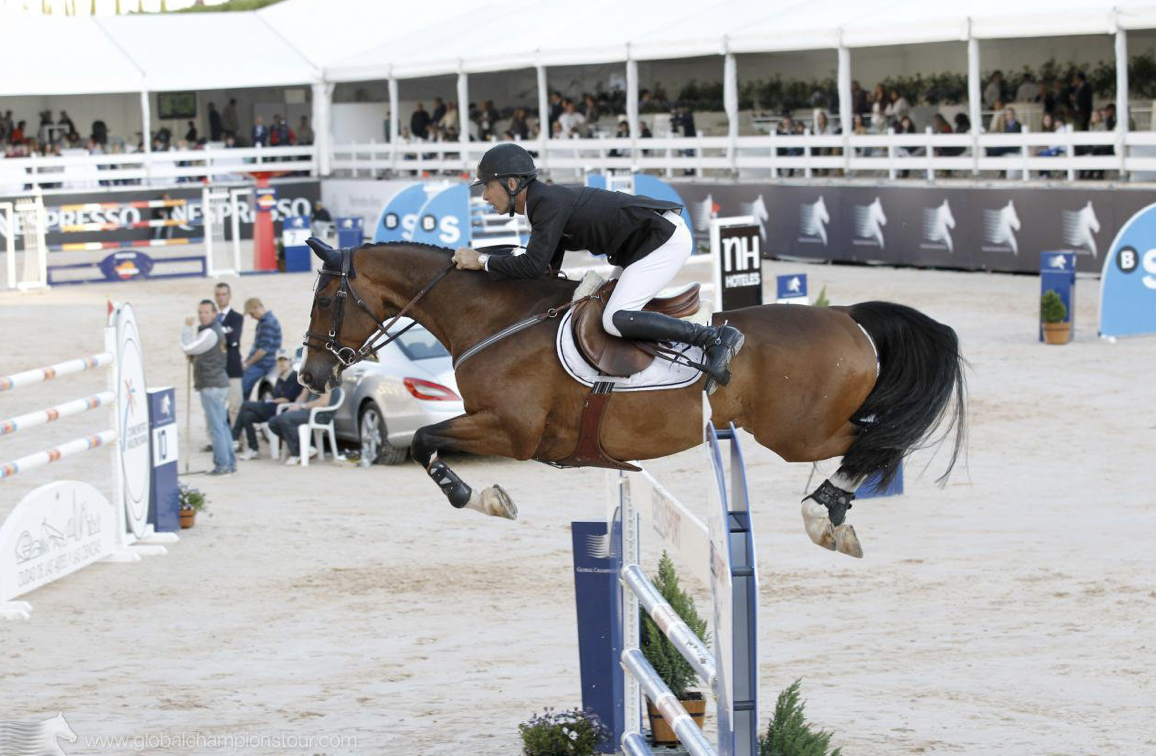
Valencia Grand Prix; Global Champions Tour 2011. Photo/ Stefano Grasso
Cristallo – a Case Study in Overcoming Challenges
Cristallo and Richard had a 14-year competition partnership that included wins throughout the world. They were in the FEI World Cup Finals six times, represented the United States on several Nations Cup teams, won a Mercedes, and had countless other memorable rounds. Richard and his wife Kaylen retired Cristallo from competition in 2018 when the Holsteiner gelding was 20-years old. He was sound and healthy, but they wanted to let him enjoy a good retirement as Richard has done with his other Grand Prix horses.
The path to success with Cristallo had many challenges. Richard started competing him when Cristallo was six years old. “He’s a fighter and I bought him because he was a fighter. I wanted to get him to fight the jump instead of me, if he could do that, he could jump anything.”
By the time Cristallo was 11, he had already won at the grand prix level and been on international teams. But he and Richard were still fighting, they didn’t see eye to eye. Richard recalls that he was tired of fighting.
“I told Kaylen that I was going to ride him for six more months and then take him back to Europe and sell him. She offered to ride him and said that I had nothing to lose. He was a tough horse, but she made me promise not to sell him.”
“Kaylen brought a totally different perspective to the relationship,” Richard continues. “She saw Cristallo’s problems based on his energy and angst and the fact that I wasn’t working him hard enough. I rode him 1.5 hours a day – I thought it was enough.”
Cristallo did this thing where he was great in the ring for the first five minutes, and then on minute six, every time, he would act up and the session went downhill. Kaylen took him into the ring and when he started acting up on minute six, she said he was angry and left the jumping ring.
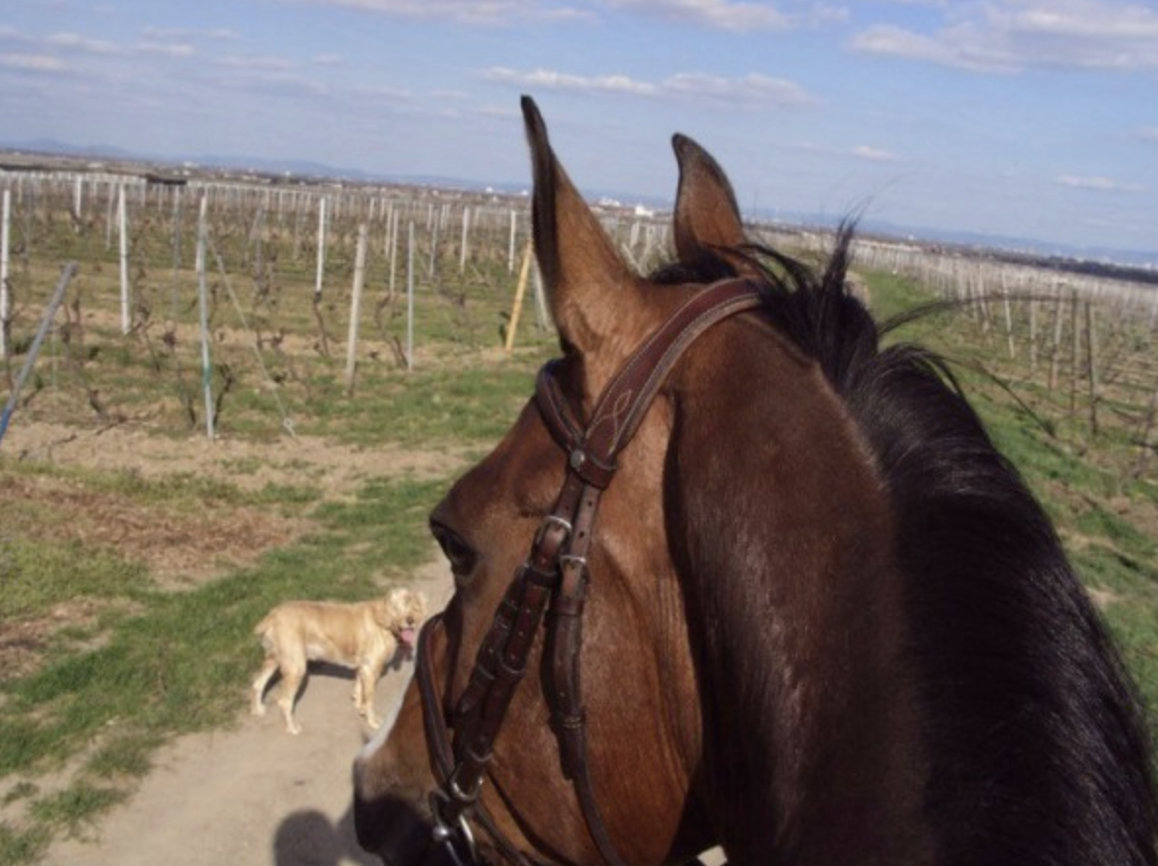
Kaylen and Cristallo explore the vineyards in California. Photo: Kaylen Spooner
“In my experience, I would have perceived that as the horse won the argument because he got what he wanted, and the horse would have perceived it that way too,” Richard says. “Kaylen took him on the trails in the mountains around our farm for a couple hours and then went back in the ring. He did his thing at minute six, so she took him back into the woods. She spent hours on the trails that day. Kaylen came back to the ring the second time and he didn’t do anything at minute six. He was going around the ring on a loose rein like a hunter. She finished working him in the ring. She won.”
Kaylen changed the dynamic of the relationship by coming at the problem from a different perspective and Richard says that is key with difficult horses. You need to be willing to try something new. If it works, great, you are no worse off from trying. The other advantage is that’s how you learn.
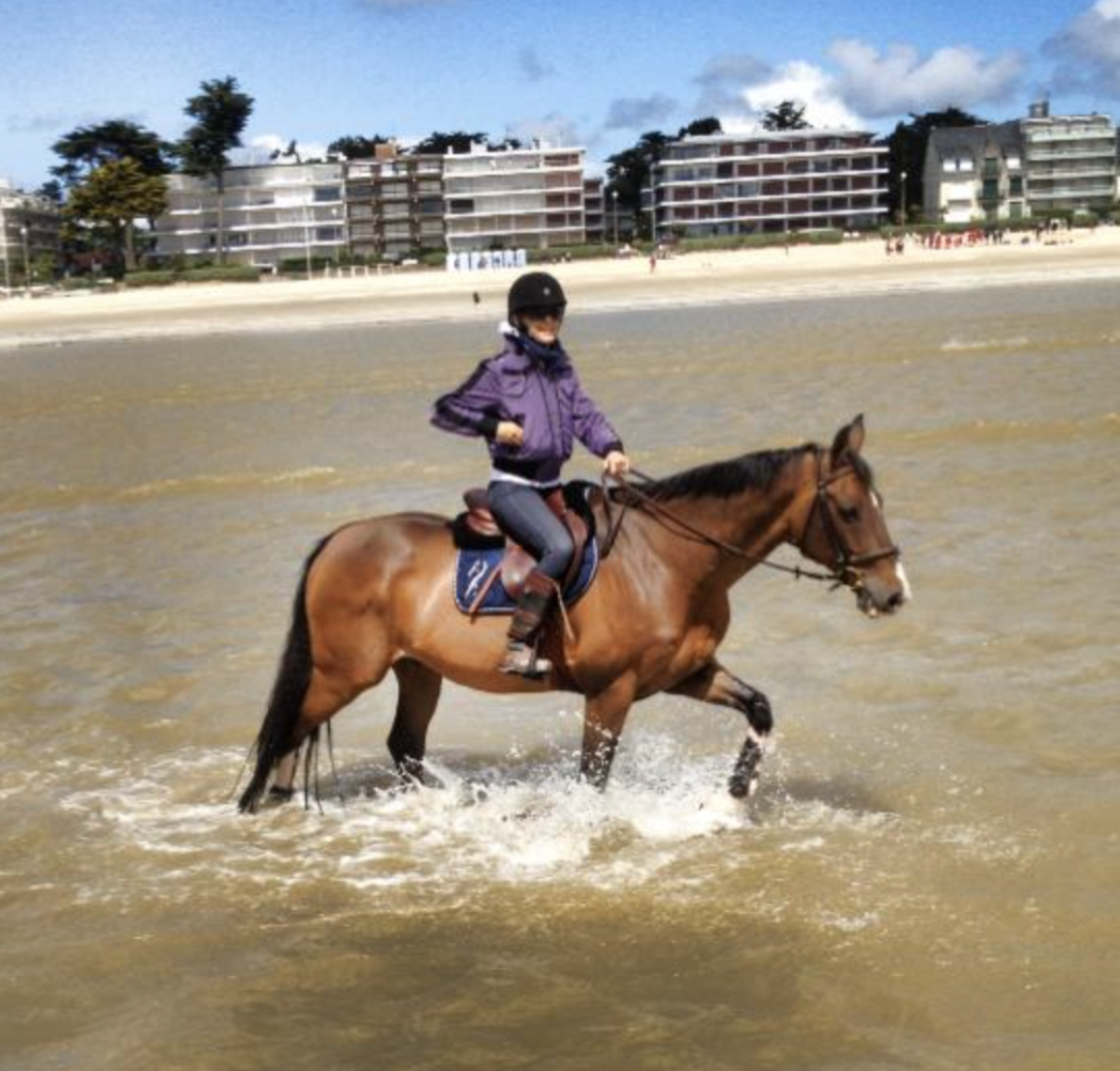
Kaylen Spooner rides Cristallo on the beach in France. Photo: Richard Spooner
Richard and Kaylen continued working Cristallo together throughout his jumping career. Kaylen would take him out on the trails around the farm, rode him in the ocean in France, and found creative ways to channel his energy. Richard developed a special bit for Cristallo since he had a sensitive mouth, and they developed a nutrition program that prevented him from forming ulcers. Their creative training system and willingness to try new things and figure out what worked took a horse with high energy and angst and transformed him into a jumping and winning machine.
“The sport gets boring if you just do the same thing all the time on every horse, that’s not very dynamic,” Richard concludes. “You need to have a broad spectrum of training techniques and be able to adapt to your environment. Change your technique from time to time and you can ride a broader spectrum of horses and that sets you apart from other horsemen. That doesn’t come from saying I’m right – it comes from saying I don’t know, and odds are I’m doing it wrong. Get your ego to the point where you can embrace and be willing to be wrong, that’s where learning begins.”
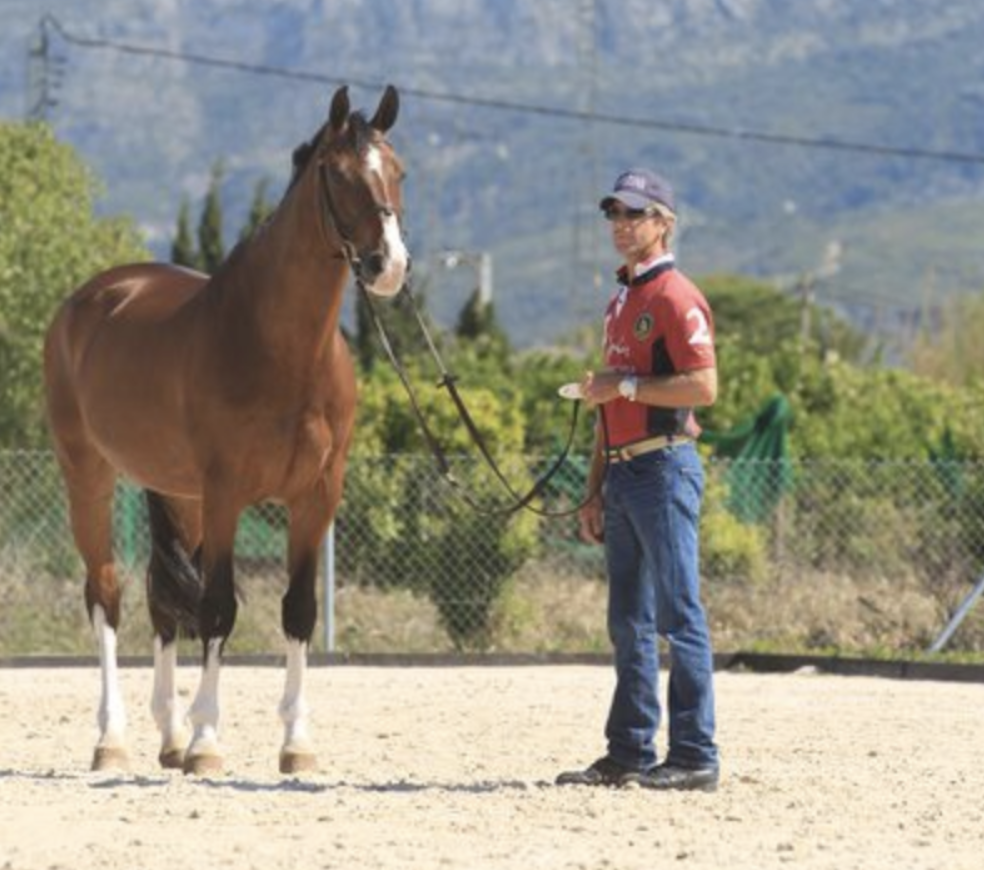
Waiting for the vet check at Valencia with Cristallo in 2012. Photo: ProEquest
Getting a new horse is exciting, and there are always high expectations for the new partnership. The key is to manage our expectations and adhere to the process that Richard outlined so that we can maximize our success with that horse. As challenges arrive, we again apply Richard’s five rules, and find creative solutions that will help the horse reach its full potential.
